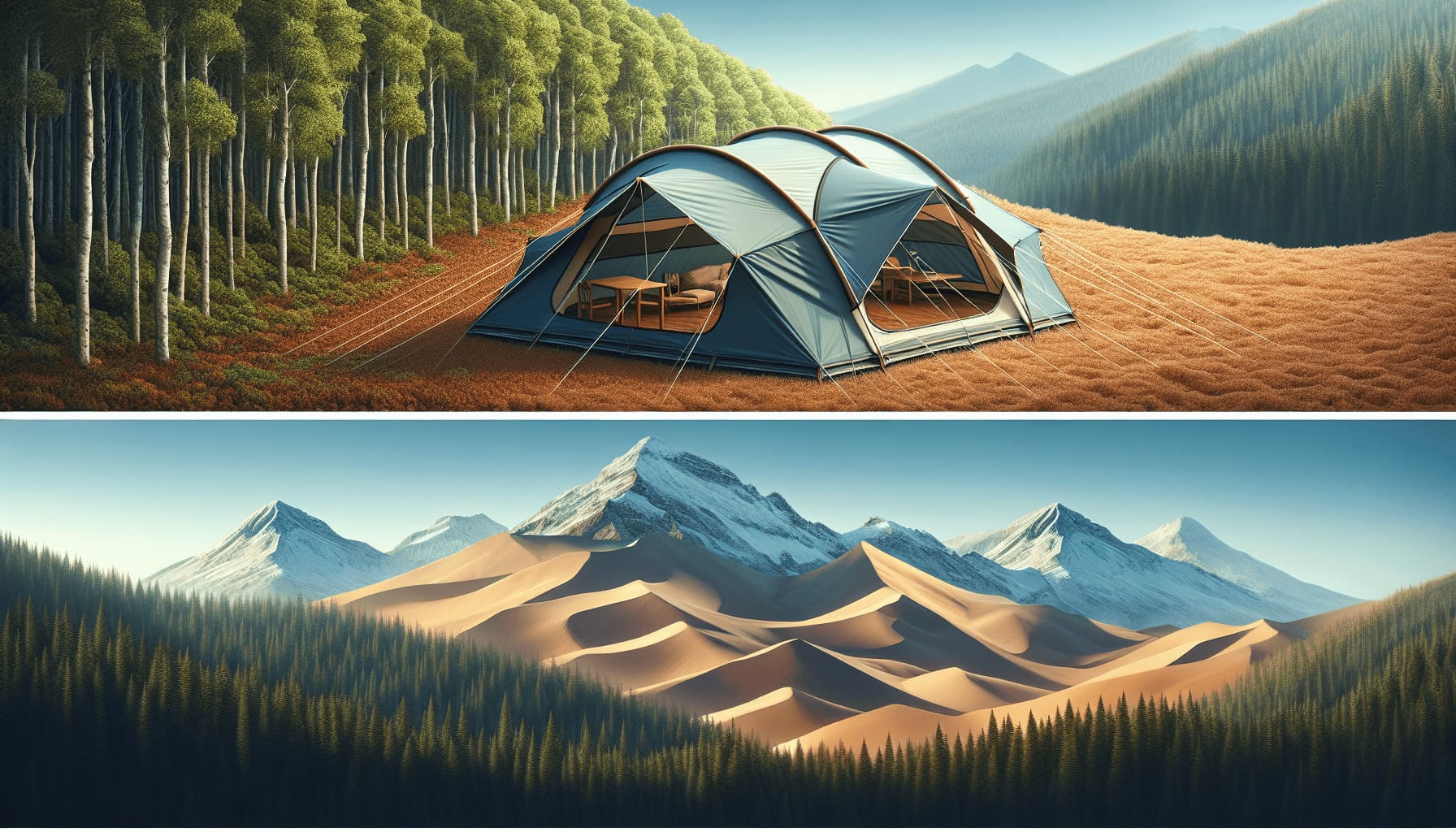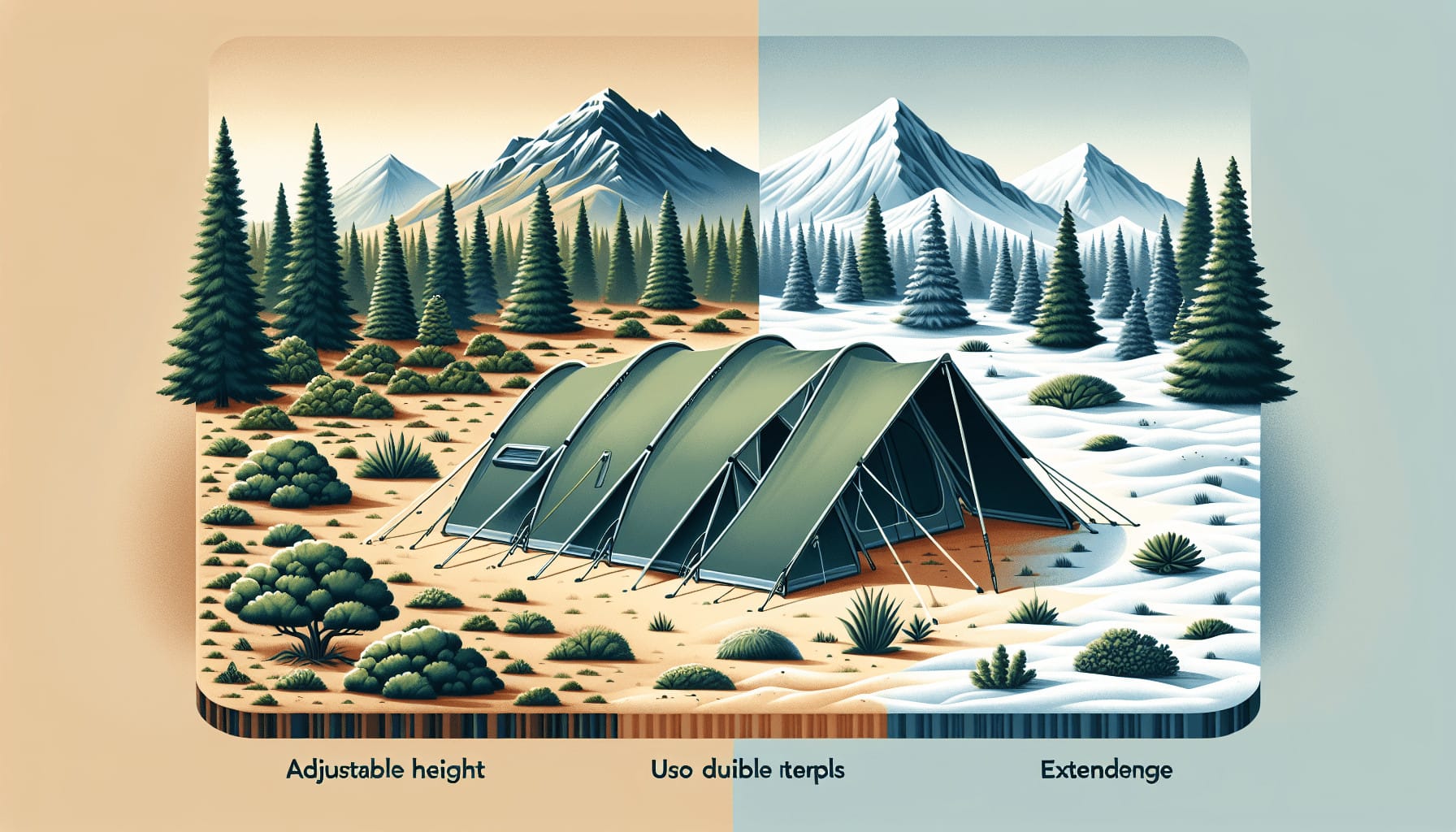Have you ever wondered how you’d stay safe and warm if you found yourself in the midst of nature’s vast environments, far from the conveniences of modern life? Building a shelter is one of the essential skills for anyone interested in outdoor survival, camping, or simply getting closer to nature. This task becomes even more intriguing and challenging when considering different terrains. Let’s explore how you can adapt your shelter-building techniques to thrive in diverse environments.
The Importance of Shelter in the Wild
When you’re outdoors, especially for extended periods, having a reliable shelter is crucial. It protects you from the elements, offers a sense of security, and is a comfortable space to rest. A well-constructed shelter can mean the difference between a comfortable adventure and an exhausting ordeal.
Shelter Essentials
Regardless of the terrain you’re in, some essentials must be considered when constructing a shelter. These elements ensure that your shelter serves its primary purpose effectively.
Protection From Weather
Your shelter should protect you from rain, wind, snow, and sun. This means materials should be chosen and positioned to keep you dry and shielded from harsh weather conditions.
Insulation
A good shelter must keep you warm or cool, depending on the climate, by providing adequate insulation from the ground and wind.
Location
Choose a safe spot away from potential hazards like falling trees or flooding. Convenience, proximity to resources, and safety from wildlife should also guide your choice of shelter location.
Understanding Different Terrains
Different terrains offer unique challenges and resources. Your ability to adapt your shelter-building techniques to each environment is crucial for comfort and survival.
Forested Areas
Forests are abundant with resources for shelter building, such as wood, leaves, and natural cover. You can create sturdy, insulating shelters using what’s readily available.
Building Techniques
- Lean-to Shelter: Using the abundant wood, you can construct a simple lean-to against a tree or rock face. Cover it with leaves and branches to insulate and waterproof it.
- Debris Hut: Use fallen leaves, branches, and twigs to create a small hut that provides excellent insulation against cold weather.
Mountain Terrains
Mountains can present harsh conditions, with cooler temperatures and less available natural resources. Here, you must leverage the landscape itself.
Building Techniques
- Rock Shelter: Natural rock formations can be used as part of your shelter, providing immediate protection from wind and rain.
- Snow Cave: In snow-covered regions, you can dig into snowbanks to create a snow cave, which surprisingly retains heat and shelters you from wind.
Desert Landscapes
Deserts are extreme in their temperature variations, needing protection from intense sun and cold nights. There is often scarce vegetation, requiring creative solutions.
Building Techniques
- Dig Shelters: Digging into the sand can provide insulation from the searing daytime temperatures and cold nights.
- Use of Tarp: A tarp or sheet can provide shade and reduce sun exposure when there are few materials available.
Coastal Areas
Coastal environments offer unique challenges due to wind, salt, and exposure to the elements. You’ll want to capitalize on the available resources like driftwood and seaweed.
Building Techniques
- Sand Dune Shelter: Use natural dunes for your benefit, digging into them to reduce wind impact while covering with available vegetation for protection.
- Driftwood Hut: Use driftwood to create a sturdy frame and cover it with seaweed or additional found materials to withstand the salty breeze.
Arctic Environments
Surviving in Arctic regions requires specialized techniques due to the extreme cold and persistent snow coverage. Shelter must emphasize warmth and stability.
Building Techniques
- Igloos: Constructed from blocks of compacted snow, igloos are effective as they insulate and utilize the cold as protection against the wind.
- Snow Trench: A simpler version involves digging a trench in the snow, covered with a tarp or snow blocks for insulation.

Making the Best Use of Available Resources
Assessing and utilizing the resources around you is crucial for successful shelter building. Understanding what each terrain offers helps reduce the burden of carrying numerous tools or materials.
Improvisation and Creativity
Often the best shelters are those that ingeniously use what’s around. Whether it’s fallen logs in a forest or rocks in mountainous areas, recognizing and applying these resources can be a game-changer.
Knots and Bindings
Knowing how to secure your materials with sturdy knots enhances the stability and durability of your shelter. This skill is invaluable across all terrains.
Utilize Tools Wisely
Whenever possible, carry tools like a knife, hatchet, or multitool, as these can simplify many shelter-building tasks, making the process more efficient and sustainable.
Prioritizing Shelter Safety
Your safety is paramount, so it’s essential to prioritize this when building and selecting a site for your shelter.
Site Assessment
Whenever you choose a site, ensure there are no overhead hazards like unstable branches or rocks that could become dislodged.
Avoiding Wildlife
Be aware of the local wildlife and ensure your shelter does not invite unwanted attention. Proper storage of food and maintaining cleanliness can help mitigate these risks.

Practical Tips for Shelter Building
To build an effective shelter, applying practical tips can enhance your ability to create a comfortable and protective space.
Starting Small
Begin with simple structures, especially if you’re inexperienced. As you gain confidence, you can progress to more complex designs.
Staying Dry
Keeping the interior dry is crucial. Always account for rain runoff and moisture collection when designing your shelter.
Utilizing Insulation Techniques
Insulating your shelter from cold ground and air can help maintain warmth. Use natural materials like leaves, moss, or snow to create a buffer.
Conclusion
Creating a shelter tailored to the terrain you’re in requires understanding and adaptability. By mastering the techniques suited for various environments, you increase your chances of comfort and survival in nature’s diverse settings. Whether in a dense forest, on a windswept coast, or the snow-laden Arctic, your skills will allow you to find solace and safety, using the land’s resources and your wit. So, now that you understand the basics of shelter building across different terrains, would you feel more prepared for your next outdoor adventure?
